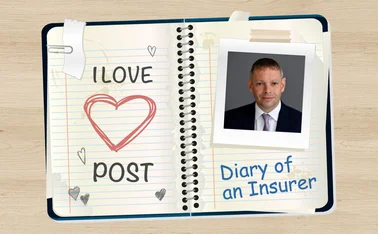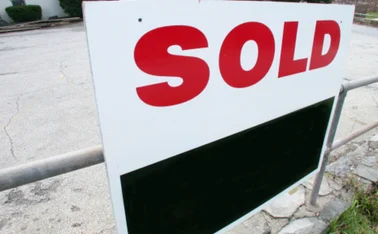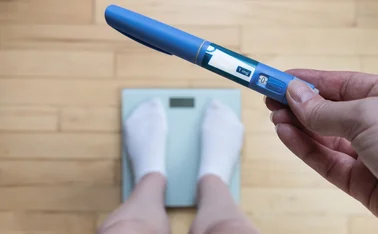
Analysis: Impact of smart home technology on escape of water claims

In 2018 insurers dealt with 228,000 escape of water claims, at a cost of £617m – an increase from £529m paid out five years ago, according to statistics from the Association of British Insurers. With the rising cost of claims, can technology help reduce this number?
Escape of water affects around 43% of domestic properties in the UK, according to research from Leakbot, which found that the average flow rate for a domestic property with an active leak is 20.63ml per minute, which amounts to 30 litres of water wastage per day if left unrectified.
Craig Foster, CEO of Leakbot, says: “The level of water escaping from previously undetected sources is significant and can have huge implications for insurance claims, but identifying the problem early can prevent much more serious issues in the future.”
He adds that while the water damage is expensive, it is also damaging to housing infrastructure and the environment.
Over recent years, insurers have been concentrating on raising awareness around EOW and educating customers about the measures they can take in order to minimalise the risk of the leaks happening.
Adrian Ewington, underwriting and markets director at Home & Legacy, adds: “We try and educate our brokers and customers about the importance of knowing where their stopcock is. The advice we’ve been giving to customers, especially when they are going away for holiday is to know where their stopcock is and to actually turn their stopcock off to turn the water off from coming into the property.”
Smart technology detecting leaks
However, due to shortfalls in preventative measures, leak detection and water isolation devices are gaining prominence in recent years.
According to Nigel Clarke, executive director at McLarens, the most well known are the mains pressure monitors.
However, there are also “sensor drip trays that can be placed under plumbing fitments and appliances, as well as detection matting, which can be fitted in vulnerable and concealed areas”.
These devices usually work with smart home technology to issue alerts to customers in case of a leak, these devices include Leakbot and Leaksafe.
Other options include devices that can automatically close off the water supply, however, these devices “tend to be quite cost prohibitive because they can cost around £400 to install”, according to Nic Hartley, head of business improvement and innovation at Ecclesiastical.
One of the lower-cost options identified by Ian Gibbs, national technical manager at Sedgwick, are battery-operated alarms.
Gibbs says: “Clearly battery-operated alarms in the most vulnerable areas would be low cost to install and affordable, but rely on human intervention, so may not provide enough confidence to insurers that claim costs will be mitigated.”
How to prevent water leaks in the first place?
Ian Gibbs, national technical manager at Sedgwick, explains that in order to address the prevention of leaks, companies need to have a good understanding of the cause and this is an area where more research is required.
He says: “Research Sedgwick is undertaking is seeing an emerging picture, that the main cause of escape of water claims is corrosion and joint failure in traditional pipework, not necessarily new plastic pipework or complex plumbing systems. If this is confirmed, then prevention does not look a realistic strategy, as pipework is hidden and identifying areas of likely failure is unrealistic.”
He adds that there is also the issue of new build to consider.
“If the automatic shut off systems were installed during construction, the costs for devices would soon tumble and this would significantly reduce future risk. However, this is not a requirement of Building Regulations and I doubt something developers would probably see as a selling point, so there is not the drive to install these devices.”
Meanwhile, Paul Redington, regional major loss property claims manager at Zurich, highlights that there are few elements to consider when taking preventative measures.
These include the construction phase of new build projects, property management, and maintenance.
According to Simon Hird, director of broker and intermediary at Legal & General, there are measures that homeowners can take in order to avoid EOW claims.
He says: “Homeowners should have lagging on pipework in their properties, particularly in cold areas such as loft spaces while boilers and heating systems should be regularly maintained.
“If away visiting friends and family or on holiday during winter, they could keep their central heating on low and open the loft hatch, so warm air can get to pipes.
“However, if homeowners would prefer to leave their heating off, they can drain their whole system and switch the water off at the mains. If away during the summer, they could switch the water off at the mains.
“Easy measures like this can go a long way in helping people avoid water leaks in their homes which could lead to costly and cumbersome repairs.”
Catherine Bell, chair of Magenta, has pointed out that due to the number of options available on the market, insurers have to identify the option that reflects the needs of the homeowner, while delivering a clear risk mitigation benefit.
“Partnerships and collaboration between insurance providers and technology companies will be key to addressing the challenge.”
Currently, one of the most popular water detection devices is Leakbot, which is trialled by 11 insurers including Covéa, Ecclesiastical, and RSA.
Foster adds: “Our experience working with 11 major insurers across the UK, US and Europe suggests that low-cost, non-invasive solutions like Leakbot are preferred by insurers. Leakbot can be sent through the post and easily clipped onto the mains water pipe by customers themselves and with one device the whole mains water plumbing system is protected, which means far less outlay to the insurer to roll out the technology across their customer base.”
Leaksafe is also tested by a number of insurers, which include Home & Legacy, Covéa and Axa.
Ewington explains: “We work with a company called Leaksafe that has some pretty sophisticated technology and its particular piece of equipment allows you set it on a delay so it switches water off in a few hours so it responds a bit more to flexibility of customers lifestyle and their current needs but also protects the property longer term.”
Mitigating costs
With the high cost associated with EOW claims, it is important that the smart home devices are mitigating the costs and reducing the number of claims.
To reduce the costs of claims, speed is of the essence, according to Clarke.
“Unfortunately, we still see claims coming to us where costs have escalated, or complaints have arisen because the customer has been poorly guided at first notification of loss and has simply been asked to come back with a claim. There is no substitute on these claims for getting the right people to site on day one and making the swift decisions that need be made,” he says.
According to Sara Simmons, head of high net worth and operational governance at Covea, the most severe EOW claims tend to be those where a leak has been unknown for an extended timeframe, which is normally discovered when it’s too late for damage to be avoided.
“Smart technology acts as an early warning system to allow homeowners to take action and repair leaks which they otherwise would not have known about. So early damage from a leak can be nominal, within a customer’s EOW excess or much smaller and, therefore, less traumatic than a major loss,” she explains.
However, for smart technology to have a real impact on EOW claims, it needs to prevent the loss not just identify it, warns Neil Wilks, head of tech and digital at Auger.
In numbers
Claims in 2018
228,000 claims, at a cost of £617m
Claims in 2017
243,000 claims, at a cost of £641m
Claim cost per day
£1.8m
Water wastage per minute
20.63ml
Water wastage per day
30 litres
Water wastage per year
10,843 litres
Source: Association of British Insurers and Leakbot
He says: “If we’re clever enough to identify a leak then we need to take it a step further and be pro-active in automatically shutting off the source of the water. We’ve not seen anything hit the UK market that promises this level of functionality.”
This is echoed by Gibbs who is sceptical whether smart technology will reduce the number of claims: “The most effective systems may well minimise the EOW so significantly that policyholders decide not to make a claim, but this will be the exception.”
Cost-effective to install?
While the leak devices are becoming more accessible, some of the more advanced devices which can turn off water supply off are still very expensive.
Insurers have to consider the effectiveness of these devices to justify rolling these out across their portfolio, while some choose to install these devices in higher-risk properties.
David Williams, managing director of underwriting and technical services at Axa, says: “From an insurance perspective before we can consider improving terms, we do need something that reduces or prevents loss, rather than just notifies.
“That is why at the moment we are seeing these solutions more in commercial properties where it is easier to justify the cost, or in residential properties with a history of EOW claims, where the policyholder is looking to get improved terms, maybe in the form of a reduced excess.
“On our larger real estate connections, we often include a risk management bursary, and this has been used on occasions to fund smart equipment.”
Meanwhile, Wilks explains that effective technology to help prevent EOW claims is likely to involve a level of disruption during the installation process.
He says: “This disruption, combined with a cost likely to be around £500 or more for the device, may make the adoption of this technology prohibitive to both the insurer and homeowner – particularly when a customer has not experienced an EOW loss.”
According to Bell, it is “not only fiscally wise and prudent to adopt water management risk mitigation, but it is a responsibility to offer such a solution, at the very least, as part of the resilient repair after an EOW”.
Bell adds: “Statistics show an increased likelihood of a second EOW event happening in the same property within a year. This directly impacts insurers with further costs, often meaning that the same home will be repaired more than once for the same problem.
“Insurers would save money from adopting a proactive response at the resilient repair stage and can also offer their clients access to solutions rewarding them for their decisions to adopt a system. This, by comparison, would ultimately save money on losses incurred.”
Proactive approach
Bernard Hayden, head of risk management at Azur, also believes in a proactive approach and says that as an insurer it will promote the installation of these devices by giving contributions towards the installation cost for new businesses.
Some devices available on the market
- Aqualytics
- Leakbot
- Leaksafe
- Roost
- Waterlock
One of the approaches Azur has taken is to pay for the installation of water leak devices for policyholders who have encountered a leak during their policy period.
Hayden explains: “We found out that if they have one water leak during the policy period the chances there will be another water leak within the same period are high because there could be an inherent problem in the joints within the pipework or poorly installed pipework, so we basically get them as part of dealing with the claim and the repair and include the cost of the device within the claims cost. If you get a £50,000 claim for water damage the cost of installation of, let’s say, £2000 for one of these devices is very small compared to claims cost, but then it prevents the second or third claim coming through.”
Ewington agrees there may be some customers where an insurer feels it is “prudent as part of claims settlement to put future risk mitigation measures in place and that may be a leak detection device or shut off valve in a property post-loss”.
He says: “While it doesn’t prevent initial loss from happening it might prevent future losses from happening.”
Hayden also highlights an opportunity for industries to collaborate with water companies around the use of technology to identify EOW in a residential building as “they are responsible to a certain point” which could help with funding the installation of the devices.
“There’s definitely a joint opportunity to get hold of leaks sooner than we can do today. There’s potential for collaboration between different industries which could help with the investment model and the funding for the smart home technology,” he says.
However, Jay Borkakoti, director of home insurance at Lexis Nexis, points out that it is too early to see the full benefits of the smart home devices: “At the moment it’s difficult to see how the full cost-benefit analysis stack up for water leaks specifically.
“There is an assumption - in my view quite illogical - that by having an early recognition of the problem you prevent the claims cost from spiralling materially enough to justify it.”
Tailored policies and underwriting
With EOW claims numbers increasing, insurers have to think about how to protect themselves against the rising risk.
To do so, many insurers have introduced stricter risk appetite for properties which have a history of EOW claims and will require additional information and risk improvement.
Simmons says: “If there has been a recent claim and no risk mitigation has been carried out then it may be difficult to obtain a quotation.”
She adds that for existing cases where a loss has occurred in the expiring period, Covéa will consider installing Leakbot. However, for smaller EOW claims and for the larger claims which trigger “our preventative measures cover, we either fund or contribute towards to the cost of installing leak prevention devices, as part of the settlement of a claim”.
“For ageing properties, all perils are taken into consideration when rating policies and older properties do receive a higher base rate.
“Renewal increases are based on a number of factors and are detailed in renewal guidelines, which take into account number of claims, age, discounting levels as well as the type of claim,” she explains.
Williams adds that the age of pipework is a “very good indicator of the likelihood of claims”.
He says: “Unfortunately since pipes are often concealed in walls, floors and ceilings, it is at times difficult to detect the precise location of a leak, let alone repair it and prevent future losses. This means work can be expensive, with customers understandably reluctant to go through the disruption necessary to reveal and replace defective pipework.”
However, according to Hayden, the age of the property or the water system are not necessarily indicators of the likelihood of claims.
He says: “Historically, we assumed it was the age of the property, but often it’s the plastic plumbing and the way the pipes are joined, we found it’s not done properly it’s just basically fitted quickly or too quickly which leads to a failure within a week or two or clients moving in. It’s not all the time but it is concerning that that can happen.”
Only users who have a paid subscription or are part of a corporate subscription are able to print or copy content.
To access these options, along with all other subscription benefits, please contact info@postonline.co.uk or view our subscription options here: http://subscriptions.postonline.co.uk/subscribe
You are currently unable to print this content. Please contact info@postonline.co.uk to find out more.
You are currently unable to copy this content. Please contact info@postonline.co.uk to find out more.
Copyright Infopro Digital Limited. All rights reserved.
As outlined in our terms and conditions, https://www.infopro-digital.com/terms-and-conditions/subscriptions/ (point 2.4), printing is limited to a single copy.
If you would like to purchase additional rights please email info@postonline.co.uk
Copyright Infopro Digital Limited. All rights reserved.
You may share this content using our article tools. As outlined in our terms and conditions, https://www.infopro-digital.com/terms-and-conditions/subscriptions/ (clause 2.4), an Authorised User may only make one copy of the materials for their own personal use. You must also comply with the restrictions in clause 2.5.
If you would like to purchase additional rights please email info@postonline.co.uk








